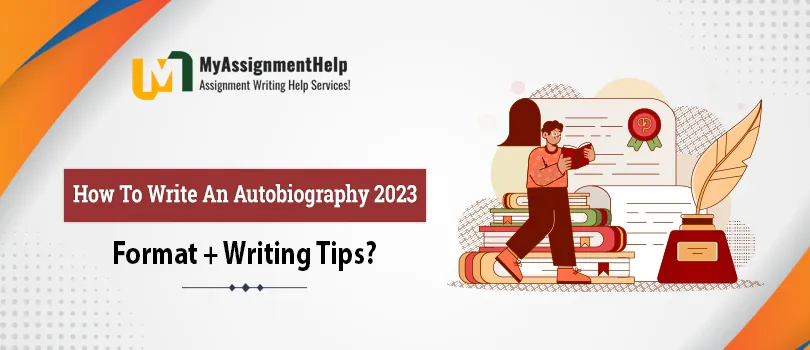In the digital age of 2023, the art of crafting an autobiography has taken on new significance. Whether you’re a student working on an “Autobiography Short Example Assignment Help” or someone eager to document their life story, understanding the structure and gaining valuable writing insights is crucial. Let’s delve into the key elements of creating a compelling autobiography.

Begin with a Captivating Introduction
The opening of your autobiography should grab the reader’s attention. Consider starting with a significant life event, an intriguing quote, or a vivid description of a pivotal moment. Engage your audience from the outset to ensure they are hooked into your narrative.
Establish a Chronological Timeline
Organize your life events in chronological order. This not only provides a logical flow to your story but also helps readers follow the evolution of your character and experiences over time. From childhood anecdotes to recent milestones, map out the events that shaped you.
Focus on Themes and Motifs
Identify key themes and motifs that run through your life. Whether it’s resilience, personal growth, or overcoming challenges, weaving these elements into your narrative adds depth and coherence to your autobiography. This allows readers to connect with the underlying messages of your life story.
Dive into Personal Reflections
An effective autobiography goes beyond a mere recollection of events. Share your thoughts, emotions, and reflections on significant moments. This personal touch allows readers to connect with your experiences on a deeper level, making your autobiography more relatable and impactful.
Use Dialogue and Descriptive Language
Bring your story to life by incorporating dialogue and descriptive language. This not only adds authenticity but also helps readers visualize your experiences. Paint a vivid picture of the people, places, and emotions that have played a role in your journey.
Include Autobiography Short Examples
For those tackling an “Autobiography Example,” consider integrating concise, illustrative examples. These can be snippets that highlight key moments or lessons, showcasing your ability to distill your life story into impactful and concise narratives.
Embrace Honesty and Authenticity
Readers connect with authenticity. Be honest about your experiences, successes, and failures. Embracing vulnerability in your writing allows others to relate to your journey and can be a source of inspiration for those facing similar challenges.
Highlight Influential People
Acknowledge the individuals who have played a significant role in your life. Whether it’s family, friends, mentors, or even adversaries, recognizing their impact adds depth to your autobiography. Share how these relationships shaped your character and influenced your journey.
Craft a Compelling Conclusion
Conclude your autobiography with a powerful summary. Reflect on your growth, lessons learned, and the person you have become. Consider leaving your readers with a thought-provoking message or a call to action, inviting them to reflect on their journeys.
Seek Feedback
Before finalizing your autobiography, seek feedback from peers, mentors, or writing professionals. Constructive criticism can provide valuable insights, helping you refine your narrative and ensure that your autobiography resonates with your intended audience.
Conclusion
Writing an autobiography in 2023 is a blend of art and storytelling. By following these tips and incorporating examples, particularly if working on an “Autobiography Short Example Assignment,” you can create a compelling narrative that captures the essence of your life journey. Embrace the digital age by sharing your story with the world, leaving a lasting impact on readers and generations to come.





